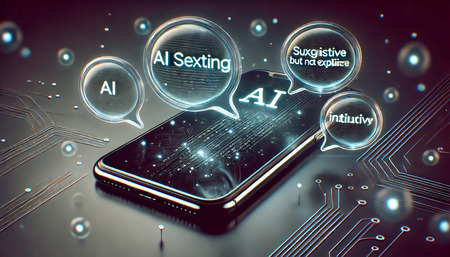What Are the Different Types of AI Chatbots and Their Uses?
Chatbots powered by artificial intelligence have changed how we communicate with technology. These tools are now common in businesses, healthcare, education, and even personal use. What many don’t realize is that not all chatbots are the same. Each type has unique features and serves specific purposes. Let’s look at the main types of AI chatbots and how they’re being used today.
Rule-Based Chatbots
Rule-based chatbots are straightforward. They work by following pre-written instructions. These bots rely on specific keywords or phrases to respond to user queries. When someone types a question or request, the bot checks its programmed responses and delivers an answer.
These bots are widely used in businesses for simple tasks like answering FAQs, assisting with store hours, or directing customers to the right department. For instance, a restaurant might use a chatbot to let customers make reservations or check the menu.
But there’s a downside. Rule-based bots can only handle what they’ve been programmed for. If a user asks something outside of their script, the bot won’t have an answer. Despite this, they remain useful for predictable, straightforward interactions.
AI-Driven Chatbots
AI-driven chatbots, on the other hand, are smarter. They use technology like natural language processing (NLP) and machine learning to figure out what users mean, even if the wording is unclear. These bots can adapt and improve their responses over time by analyzing past interactions.
A popular example is using these bots in customer service. They can help resolve issues by understanding the problem and providing tailored solutions. Unlike rule-based bots, AI-driven chatbots can handle follow-up questions and adjust their responses based on the conversation’s context.
In education, these bots act as virtual tutors, answering questions and guiding students through lessons. Healthcare providers use them to offer advice based on symptoms or help patients manage chronic conditions. They are ideal for tasks requiring more depth and flexibility.
Context-Aware Chatbots
Context-aware chatbots take things a step further by remembering details from past interactions. For example, if you’ve told a shopping bot about your clothing preferences, it might suggest similar items next time you chat. This ability to recall and use context makes conversations more personalized.
Travel companies use these bots to provide better customer experiences. A travel chatbot might remember your favorite destinations or seating preferences and suggest flights accordingly. Similarly, in financial services, a bot could keep track of your spending habits and offer budgeting tips.
While these chatbots feel more advanced, they do require a lot of data and training to function properly. Companies often use them in areas where personalization can significantly impact customer satisfaction.
Voice Chatbots
Voice chatbots are designed for people who prefer speaking over typing. These bots use voice recognition technology to understand spoken language. Common examples include Alexa, Siri, and Google Assistant.
These bots are great for tasks like setting reminders, controlling smart devices, or providing quick answers to general questions. Voice chatbots also help people with disabilities, allowing them to interact with technology hands-free.
However, voice recognition systems still face challenges, such as understanding diverse accents or speech patterns. Developers work to refine these systems to make interactions smoother and more accurate.
Chatbots on Social Media
Social media platforms often integrate chatbots to make services more convenient. These bots handle tasks directly within apps like Facebook Messenger or WhatsApp. For instance, if you’re browsing a clothing brand’s Instagram, you might interact with their chatbot to ask about prices or availability.
Many businesses rely on social media bots to improve customer engagement. They can send updates, process orders, or respond to inquiries quickly. Public figures also use these bots to communicate with fans, share announcements, or answer frequently asked questions.
By automating repetitive tasks, social media bots help brands and influencers maintain meaningful connections with their audience while saving time.
Hybrid Chatbots
Hybrid chatbots combine features from both rule-based and AI-driven models. These bots primarily rely on AI to handle conversations but switch to predefined responses when needed.
For example, in customer service, a hybrid chatbot might use AI to figure out a user’s problem. If the issue is outside its scope, it can direct the conversation to a live agent or provide a rule-based response.
These bots are especially useful in industries where accuracy and adaptability are important, like banking or healthcare. By blending automation with human intervention, they offer a balance between efficiency and reliability.
Specialized Chatbots
Specialized chatbots are built for specific purposes. Unlike general-purpose bots, these are tailored to unique needs within particular industries or interests.
Mental health apps often include chatbots to help users cope with stress, anxiety, or depression. These bots guide users through relaxation techniques or offer supportive conversations. In the entertainment world, chatbots simulate fictional characters, adding interactive elements to games or stories.
Interestingly, there are even chatbots designed for personal and private conversations, including platforms that offer AI sexting bots. These cater to users looking for intimate, non-judgmental exchanges, providing a controlled space for exploring personal communication styles.
Industry Applications
Chatbots play a role in almost every industry. In retail, they assist with purchases, returns, and customer inquiries. In healthcare, they handle appointment scheduling, symptom checks, and reminders. Educational platforms use chatbots to guide students and answer their questions.
For businesses, chatbots are essential for improving customer experiences. They provide quick responses, automate routine tasks, and allow employees to focus on more complex issues. On a personal level, people use bots as virtual assistants, fitness trackers, or even conversational companions.
Conclusion
Chatbots come in various forms, each serving a different purpose. From basic rule-based bots to highly personalized context-aware systems, these tools are shaping how we interact with technology. Whether in business or personal life, they simplify tasks, save time, and provide new ways to connect.
As technology continues to develop, the possibilities for chatbots will expand even further, making them an integral part of daily life.


